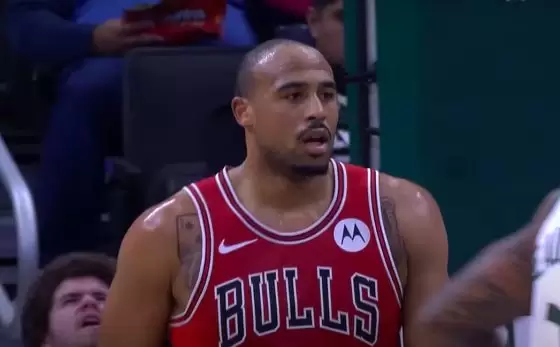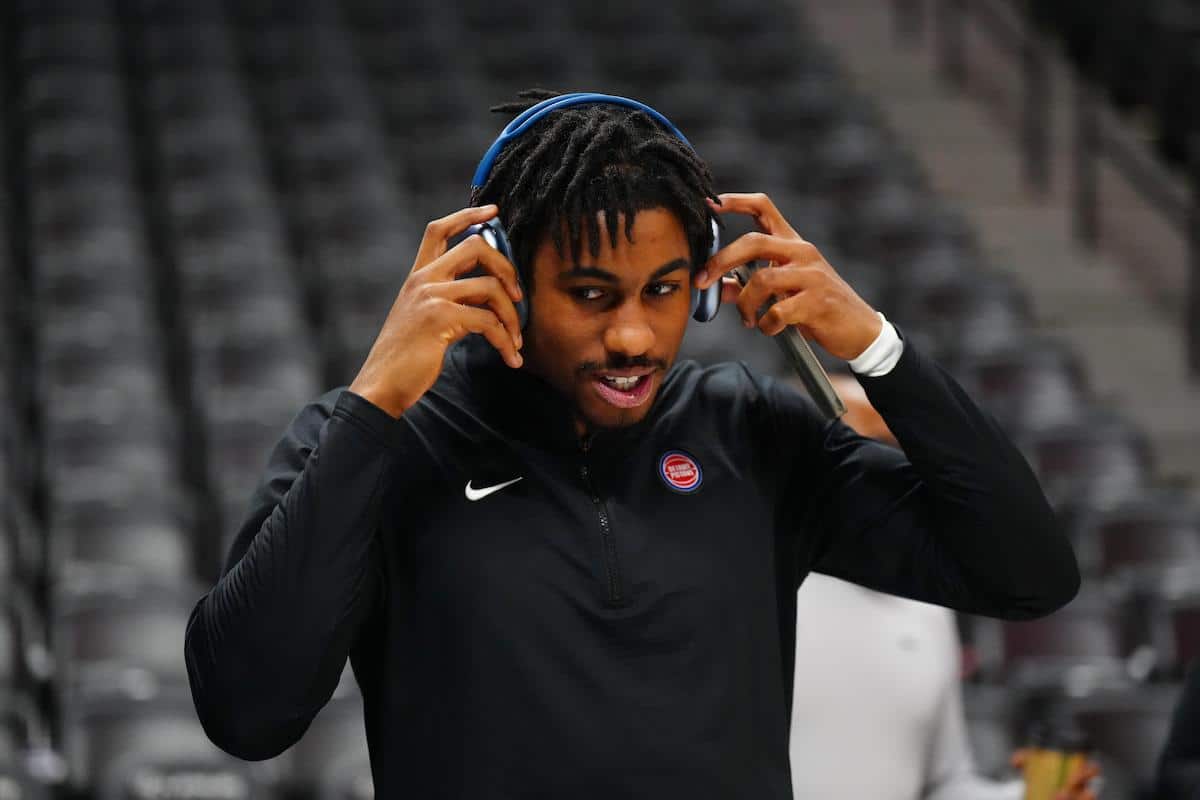On Monday night, Robert Williams made his return to the Boston Celtics‘ starting lineup, and for the first time this season, we got a glimpse of how the double-big system will look under Joe Mazzulla. As you would expect, Williams’ presence within the rotation provided the Celtics with a new dimension on both sides of the court.
We’re all accustomed to seeing Williams block shots, but in truth, his impact incorporates shot deterrence as well as shot-blocking, and that was on full display against Chicago. Williams ended the contest with a game-leading 13 shot contests, 5 of them coming on the perimeter. What I find interesting is the number of shots that simply didn’t occur due to his presence on the floor.
Let’s take a look at some of the things Williams reminded us of during his first outing as a starting center this season.
Defense
DeMar DeRozan is pulling up for a mid-range shot against almost any other opponent in this spot. Curling off a Nikola Vucevic screen, getting into the mid-range, and easily finding his spot, DeRozan must have felt like it was Christmas all over again until Williams closed the distance and consumed his air space. Whenever Williams is around, you know there’s a chance of your shot getting swatted, so when he’s right up on you, it’s an inevitability.
Sometimes, even when you do feel like there’s more than enough time to get a shot off, Williams will come out of nowhere to make you question how he covered so much ground in so little time.
Last season, Williams had an impressive 40.2 defensive field goal percentage, meaning on average, players were only hitting 4 out of 10 shots against the bouncy big man. This season, in a minuscule sample size, players are shooting 38.6% when Rob is tasked with defending them.
Overall, you could argue that Williams’ greatest asset is his ability to impose himself on whoever he’s defending, making them settle for shots that they wouldn’t usually take. Perhaps that’s why Williams was so impactful as a weak side helper/roamer last season because that role allowed him to implement himself into numerous positions and impose his defensive attributes at will.
“It’s good
to have him back out there. He just does so much for our defense. It just takes us to another level, so I was just happy to see him out there with us getting some good minutes,” Al Horford said.
Take this above possession, for instance, where Williams is operating as a rim protector in help position. As Ayo Dosunmu curls over the Vucevic screen and begins to pressure the rim, Williams slides into the paint to take away Dosunmu’s lane and forces the pass to the perimeter.
Offense
Vertical spacing – that’s the key phrase describing what Williams brings to Boston’s offense. However, when you look a little closer, you can see he is much more than just a lob threat. Williams’ is also an exceptional screener, passer, and offensive rebounder (in his own volleyball style) — all of which give the Celtics new avenues to explore when he’s on the floor.
Can’t overstate Rob’s impact as a screener when he’s in the rotation.
Here we see him run some ‘veer’ (on-ball screen into an off-ball pin down) for Hauser.
Hand-back from Hauser to Brogdon, Pick and Pop from Hauser – 3. pic.twitter.com/SBHZQ1HGb2
— Adam Taylor (@AdamTaylorNBA) January 10, 2023
Take this above possession as an example of Williams’ willingness to be a screener for others, first as an on-ball screener, then rotating over to set a pin-down to spring a shooter free. When you add in Williams’ value as a threat in the dunker spot or as a mid-post passer, you can see why teams really struggle to decide on how best to defend an action that has the Louisana native operating in a supporting role.
A byproduct of seeing Williams operating in this way is that it encourages his teammates to operate in a similarly selfless and high-energy manner, making his presence on the floor infectious to those around him.
“Rob’s phenomenal, man. He’s such a special part of this team, he does so many things that not many people in the league can even do. So, he does a phenomenal job of not only protecting us on the defensive end, but he’s doing a great job of pressuring them on the offensive glass, being a threat down there, a lob threat. Like JT and JB both said in previous days, we get to continue to include him and continue to get him worked back into the offense, get familiar with him…He’s a phenomenal passer. That’s one of the best things he does in the game. So, getting him touches on the ball allowed us to move off the ball and create better actions so that way we get not only wide-open looks but also easy dunks and layups and everything else,” Grant Williams said.
Last season, Williams ranked dead last (excluding Matt Ryan’s 1 game) in seconds per touch, with an average of 1.26 seconds. As Williams likes to get the ball out of his hands in a hurry to allow the offense to continue flowing. This season, Williams is hovering right around that number again, averaging 1.27 seconds per touch, which is why the above clip is such a good example. Notice how Williams is instantly looking for the pass once he receives the rock on the perimeter, but rather than giving the ball to the nearest body in a Celtics jersey, he waits for Tatum to lift out of the weak side corner and get into a shooting position before swinging the ball across the court.
Passing and screening are two of the more under-rated aspects of Williams’ game, both of which have made a significant impact on how Boston approaches things on the offensive end when he’s on the floor, and both of which have helped the Celtics have rediscovered their free-flowing passing offense.
Final Thoughts
There’s no doubt that Williams completes this Celtics roster and makes them a better overall unit on both sides of the floor. Against Chicago, we got a reminder of why the Celtics’ double-big lineup made such an impact on opposing teams last season and how it helped propel Boston into the NBA Finals.
If Williams can stay healthy, continue improving his fitness, and embrace the versatile role he’s come to occupy, there’s no reason why we can’t see Boston evolve into an even bigger monster throughout the second half of the season. He may not be a superstar, but to Boston, Williams is a vital part of everything they do. No wonder Tatum has been so vocal about his love for playing alongside the bouncy big man.






